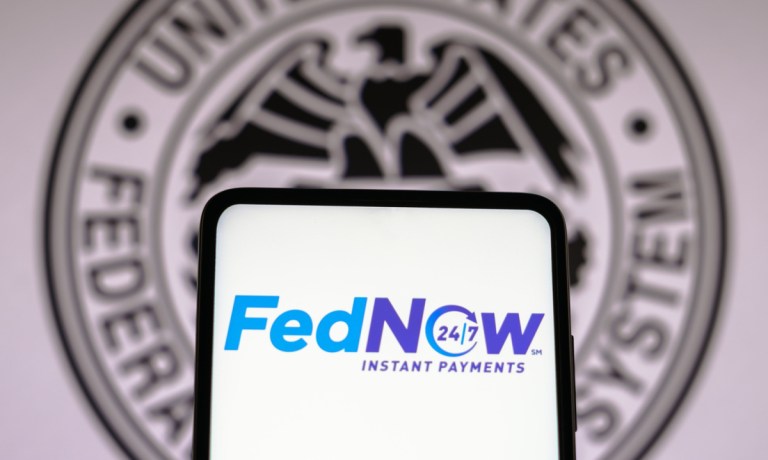
The future of money movement is accelerating globally.
With real-time payments on the U.S. RTP® Network and in Europe setting new usage records, and awareness of instant payments growing in the U.S. since the launch of the FedNow® Service last July, organizations and observers may wonder whether the benefits of instant payment rails will render blockchain-based solutions, like stablecoins, obsolete.
That’s because the RTP Network and FedNow Service both offer near-instantaneous, secure and cost-effective transactions. These systems are being developed and implemented by banks and financial institutions to modernize and expedite traditional financial services by completing transactions in seconds compared to days.
Eliminating processing delays for a better user experience is a key value proposition of both stablecoins and traditional instant payment platforms. But, notably, the FedNow Service does not support the integration of cryptocurrencies or distributed ledger technology.
The competition between instant payment systems and cryptocurrencies, particularly stablecoins, highlights a broader shift toward faster, more efficient financial transactions. Each offers a unique approach to solving the inefficiencies of traditional banking systems, but their coexistence raises questions about the future of financial transactions.
As the landscape evolves, the ultimate winners will be those that can offer winning, scalable and secure solutions that meet the diverse needs of users around the globe.
Read more: 5 Big Ideas: Making the Case for Instant Payments
The ongoing development of both instant payment and stablecoin technologies has the potential to redefine the future of financial transactions, making money movement more accessible and efficient.
“People are rewiring their businesses around payments,” Thredd CEO Jim McCarthy explained. “The winners in the future truly will understand that payments is at the middle of everything they do.”
Right out of the gate, instant payment systems have a key advantage over stablecoins: they are regulated by central banks and are part of established financial ecosystems, providing a level of security and trust that many cryptocurrencies lack due to their decentralized nature.
The FedNow Service ended 2023 with more than 300 financial institutions (FIs) signing on and using the instant payment network. And The Clearing House’s RTP Network, which has been operational for more than six years, counts more than 350 participating FIs.
Instant payment systems are also designed to be accessible to the general public, including businesses and consumers who may be wary of or unfamiliar with cryptocurrency technologies.
See also: What 17 Payments Experts Expect From Instant Payments in 2024 and Beyond
Parallel to the development of traditional instant payment systems, cryptocurrencies, particularly stablecoins, have emerged as a digital alternative. Stablecoins, which are pegged to stable assets like the U.S. dollar, aim to combine the efficiency and global reach of cryptocurrencies with the stability of traditional currencies. They offer a promising solution for instant, cross-border transactions without the volatility typically associated with cryptocurrencies like bitcoin and ethereum.
One of the believed advantages of stablecoins over traditional instant payment systems is their potential for lower transaction costs. By leveraging blockchain technology, stablecoins can facilitate cross-border payments without the need for intermediaries, potentially reducing fees. However, the efficiency of stablecoins is contingent upon the underlying blockchain infrastructure, which can vary in terms of transaction speed and scalability.
And, as with much of the Web3 landscape, the regulatory environment presents a significant challenge for the adoption of stablecoins. Unlike instant payment systems, which operate within a well-established regulatory framework, stablecoins navigate a more uncertain regulatory future. Concerns over security, fraud and financial stability have prompted calls for stricter regulation of cryptocurrencies, including stablecoins.
Still, policy frameworks like the European Union’s landmark Markets in Crypto-Assets Act (MiCA) are emerging, showing that the way forward may not be as untenable as previously thought.
As Jim Colassano, senior vice president of RTP product development at The Clearing House (TCH), told PYMNTS, “cross-border, instantaneous payments is the holy grail of payments.”
And new PYMNTS Intelligence finds that when it comes to cross-border payments, blockchain solutions could offer advantages over traditional systems. That’s because blockchain’s high throughput, low fees and 24-hour availability could remove much of the friction of cross-border transactions, making each one as easy as sending a Venmo payment.
That’s why observers believe that the ongoing co-existence of instant payment systems and stablecoins could suggest a future where consumers and businesses may choose from a variety of transaction methods based on their specific needs. Instant payment systems like the FedNow platform and RTP Network offer a secure and regulated option for domestic transactions, while stablecoins provide a solution for efficient and potentially cheaper cross-border payments.